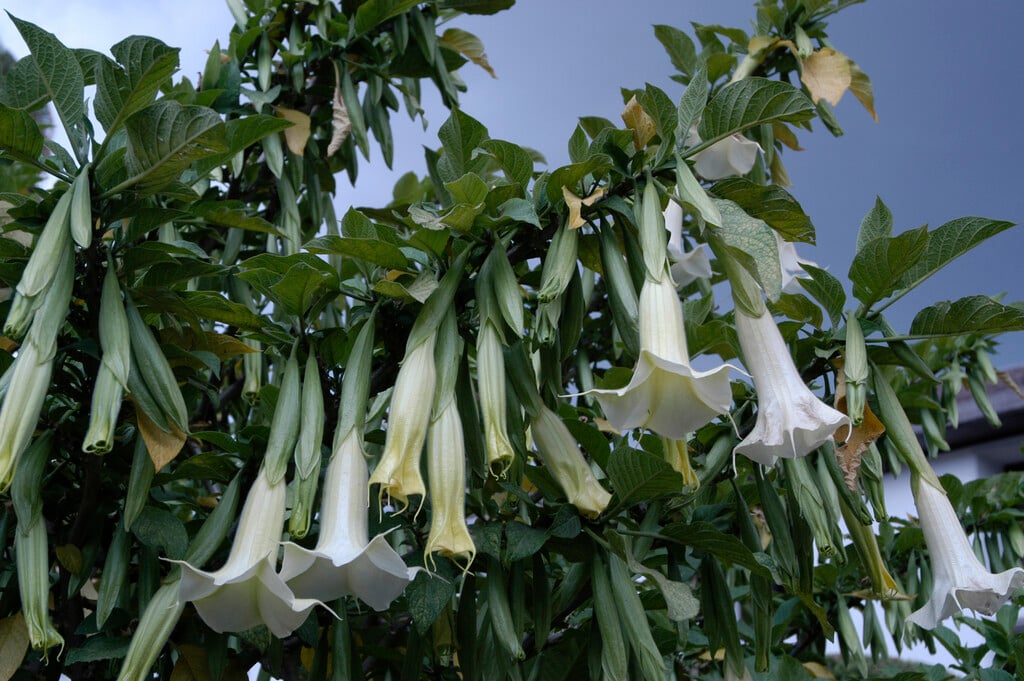Brugmansia arborea
angel's trumpet
A tropical, evergreen shrub grown for its 15cm long, trumpet-shaped, highly fragrant white flowers. Best suited to cultivation in a conservatory or greenhouse

Buy this plant
Size
Ultimate height
2.5–4 metresTime to ultimate height
5–10 yearsUltimate spread
1.5–2.5 metresGrowing conditions
Moisture
Moist but well–drainedpH
Acid, Alkaline, NeutralColour & scent
| Stem | Flower | Foliage | Fruit | |
| Spring | Green | |||
|---|---|---|---|---|
| Summer | White | Green | ||
| Autumn | White | Green | ||
| Winter |
Position
- Full sun
- Partial shade
Aspect
East–facing or South–facing or West–facing
Exposure
Sheltered Hardiness
H1CBotanical details
- Family
- Solanaceae
- Native to GB / Ireland
- No
- Foliage
- Semi evergreen
- Habit
- Bushy
- Potentially harmful
- TOXIC if eaten, skin irritant, avoid eye contact. Wear gloves and other protective equipment when handling TOXIC to pets - see the HTA guide to potentially harmful plants for further information and useful contact numbers
- Genus
Brugmansia are large evergreen shrubs with simple, ovate leaves and large, solitary, pendent trumpet-shaped or tubular flowers which are often fragrant
- Name status
Correct
- Plant range
- Ecuador to N Chile
How to grow
Cultivation
Under glass, grow in peat-free, loam-based potting compost in full light. Water freely while in active growth and apply a balanced liquid fertiliser every 2 weeks. Keep barely moist in winter. Maintain a minimum winter temperature of about 5°C; the plants will lose their leaves but these will regrow in spring. Plants may be moved outdoors to a position in light, dappled shade in summer. See brugmansia cultivation for further information
Propagation
Propagate by sowing seed in spring, or by semi-ripe cuttings
Suggested planting locations and garden types
- City and courtyard gardens
- Patio and container plants
- Sub-tropical
- Conservatory and greenhouse
Pruning
Pruning group 9, or pruning group if needed
Pests
May be susceptible to slugs, snails, mealybugs, glasshouse whitefly, thrips and glasshouse red spider mite
Diseases
Generally disease-free
Get involved
The Royal Horticultural Society is the UK’s leading gardening charity. We aim to enrich everyone’s life through plants, and make the UK a greener and more beautiful place.